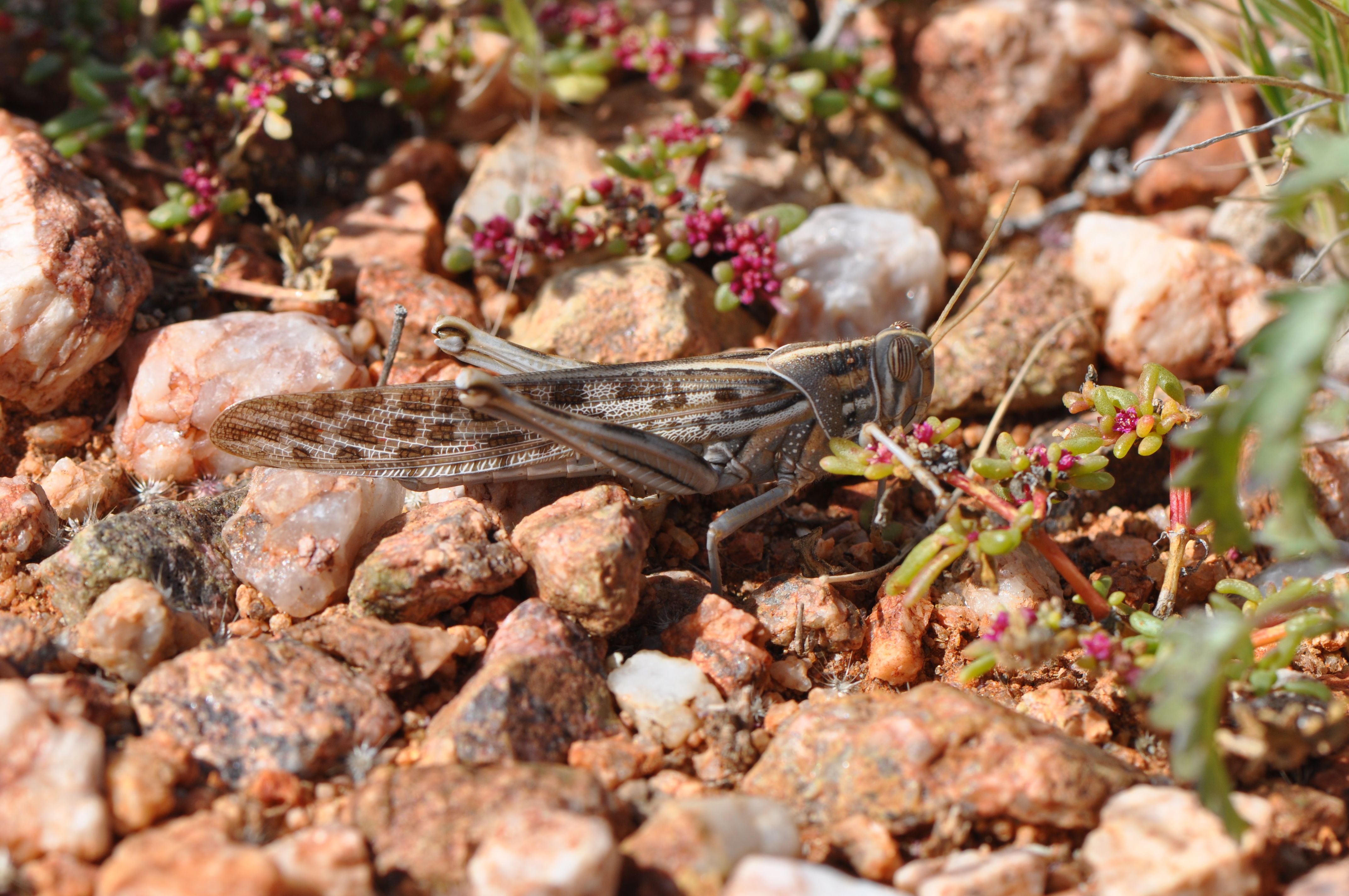Past Research Lines on Locust species
Evolution of phase polyphenism

At Cirad, we have a long history with locust species, such as the Desert locust, Schistocerca gregaria (picture: Antoine Foucart, Augrabies Falls, South-Africa) or the migratory locust, Locusta migratoria. These crop pests are subject to huge and unpredictable increases in population density, associated with a switch from the shy and cryptic to the highly active and aggregative behavior (the so-called phase polyphenism, an extreme density-dependent phenotypic plasticity). I was interested in documenting reaction norms of polyphenic traits (e.g. behavior, growth, morphology, reproduction), in exploring genetic parameters (e.g. heritability of traits) and mechanisms (e.g. heat shock proteins) as well as evolutionary hypotheses (e.g. resource use optimization) involved in phenotypic plasticity, and in identifying the environmental conditions leading to the evolution of phase polyphenism and population outbreaks. For further details on CIRAD research on locust species, see the dedicated webpage and for French speakers a dissemination article published in 2021 in the magazine "Courrier de la Nature".
Main collaborators: Hélène Jourdan, Yannis Michalakis, Benjamin Pélissié, Cyril Piou, Camille Vernier.
Main publications : 4, 8, 9, 11, 14, 27, 32, 38, 39, 41.
Population structure in locust populations
Main collaborators: Corey Bazelet, Karine Berthier, Elodie Blanchet, Arnaud Estoup, Michel Lecoq, Christine Meynard, Greg Sword.
Publications: 6, 7, 13, 15, 18, 19, 22, 26, 29, 31, 35, 36.
Molecular evolution of microsatellite markers in the Orthoptera
All locust species belong to the Acrididae (Orthoptera: Caelifera), which is characterised by giant genomes. Their microsatellite loci are therefore characterized by giant genomes, prone to high levels of heterozygosity, high prevalence of null alleles and high similarity between their flanking regions. My questions hence asked for an improved understanding of the peculiar molecular evolution of the microsatellite markers in this Order. The accuracy of inferences on evolutionary history or population demography from microsatellite data is highly dependent on this knowledge.
Main collaborators: Arnaud Estoup, Réjane Streiff.
Publications: 1, 3, 5, 16, 21, 25.